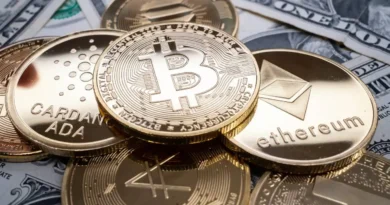Jerome Powell’s pivot heralds a boring summer for Bitcoin

Just a few months ago, most economists expected the Federal Reserve to kick start rate cuts by May. All signs pointed to this: the fight against inflation appeared to be coming to an end, jobs data promised a cooling labor market on the horizon, and consumer confidence began to falter.
Fast forward to May’s Federal Open Market Committee (FOMC) meeting, however, and the hopes of a rate cut in the first half of 2024 are quickly diminishing. Indeed, it appears likely the Fed will hold rates where they are for much longer than anyone could have imagined back in January. Some market commentators even think we’re stuck with “higher for longer” until 2025, despite the pressure of an imminent presidential election.
Whether rates stay put until September or next January, the May FOMC meeting was certainly a far cry from December 2023, when Fed Chairman Jerome Powell first mentioned rate cuts, sending markets into a frenzy. Now, we’re seeing a much more hawkish committee, resolute in its restrictive monetary policy stance in the face of stubborn inflation and a labor market that refuses to stumble.
Related: The Runes protocol will ignite a new season for Bitcoin after the halving
But while disappointing for risk assets like stocks and cryptocurrencies, the Fed’s stance shouldn’t be a surprise for anyone who follows economic data. The Fed’s preferred inflation gauge — the PCE index — rose to 2.7% in April from 2.5% in February. The CPI index has remained similarly sticky, rising again from 3.2% in February to 3.5% in March.
This has been fuelled by rampant spending, with consumers preferring to take on more debt rather than tighten their belts. In fact, the savings rate in the U.S. has continuously declined from 4.1% in January to just 3.2% in March, while household debt levels keep beating previous records. On top of this, unemployment has failed to edge higher. The jobless rate fell from 3.9% in February to 3.8% in March, hovering around historic lows.

So, even though the economy is beginning to slow — first-quarter GDP growth surprised on the downside, coming in at 1.6% against expectations of 2.4% – we’re still a long way from the economic slowdown that would warrant stimulus in the form of rate cuts. Indeed, Powell has always been clear that the Fed’s monetary policy decisions will be driven by data, and data alone. And the data simply doesn’t support a looser stance, yet.
As expected, the markets have been taking this disappointment badly. Bitcoin (BTC) was hovered between $60,000 and $65,000 in the week leading up to the FOMC meeting, and global stock markets were subdued as expectations of a hawkish pivot mounted. Conversely, the dollar strengthened, battering other global currencies like the yen, which fell to the lowest level against the dollar since 1990. Other emerging market currencies can be expected to follow.

And the bad news is that we’re likely stuck with this picture for a good few months. This will be a real anticlimax for those who expected the Bitcoin halving to drive a bullish breakout to a new all-time high. After some rampant price action over recent months, no one is ready for another extended period of sideways trading. It’s akin to the lights going on at the nightclub when the party is just getting started.
Related: Solana illustrates the dark side of monolithic blockchains
As long as the Fed holds rates steady, though, Bitcoin is likely to trade within a tight range — below $70,000 — barring any major global disasters causing a flight to safety. So far this year, Bitcoin hasn’t really cared about macroeconomics — it shrugged off the last few inflation announcements. But the Fed’s stance will have a more profound effect. The reality is that BTC is now deeply embedded in traditional financial markets thanks to spot ETFs, so it will most likely mimic the behavior of other risk assets until rates begin coming down.
So, thanks to Jerome Powell, we’re in for a boring summer that will truly test investors’ patience. That’s not to say there won’t be another Bitcoin party — it’s coming, and it will likely rival or perhaps even surpass what we’ve already seen this year. Over the longer term, the Bitcoin investment thesis remains intact. Indeed, while Powell’s renewed hawkishness is buoying the U.S. dollar for now, it’s only a matter of time until the Fed finally pulls the plug, causing renewed dollar weakness.
Once the greenback begins its slide, Bitcoin will provide refuge from currency devaluation. Then, the U.S. spot BTC ETFs will truly come into their own, and those who can hold on to their assets and wait out the drought will be rewarded. Until then, perhaps it’s not such a bad idea to leave investment portfolios alone and go enjoy the summer.
Lucas Kiely is the chief investment officer for Yield App, where he oversees investment portfolio allocations and leads the expansion of a diversified investment product range. He was previously the chief investment officer at Diginex Asset Management, and a senior trader and managing director at Credit Suisse in Hong Kong, where he managed QIS and Structured Derivatives trading. He was also the head of exotic derivatives at UBS in Australia.
This article is for general information purposes and is not intended to be and should not be taken as legal or investment advice. The views, thoughts, and opinions expressed here are the author’s alone and do not necessarily reflect or represent the views and opinions of Cointelegraph.


